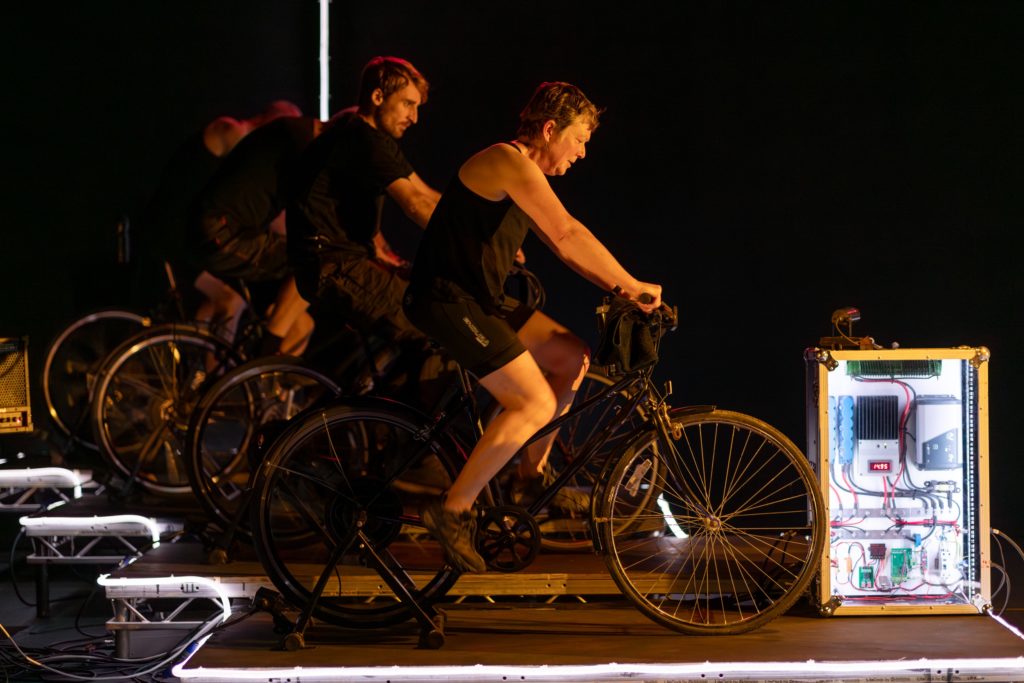
THE opening of this “bold experiment in eco theatre-making” coincided with the publication of the State Of Nature 2023 report into the UK’s biodiversity.
The headline news? One sixth of our species is under threat of extinction. Meanwhile, in the latest state of the nation report, Prime Minister Rishi Sunak is turning the blue tide against green change: more oil fields, no 2030 deadline ojettisoning diesl and petrol cars. So much for leading the way at Cop26.
To top it all, a 16-year-old boy has been arrested on suspicion of causing criminal damage in connection with the felling of the 300-year-old Sycamore Gap tree – the landmark one from Robin Hood: Prince Of Thieves – at Hadrian’s Wall.
What a week to be staging the closing chapter of the groundbreaking zero-travel tour of American playwright Miranda Rose Hall’s “darkly humorous, life-affirming one-woman show” that confronts the world’s urgent ecological disaster.
It is billed as a “fiercely feminist off-grid production that is part ritual, part battle cry, in a moving exploration of what it means to be human in an era of man-made extinction”.
That tells only half the story because the concept behind the tour, mounted by Headlong and partners York Theatre Royal and the London Barbican, turns out to be more impactful than Hall’s 80-minute diatribe.
Since opening at the Barbican, the play has travelled with an original creative template by director Katie Mitchell and black-and-white design palette by Moi Tran, but neither materials, nor people have been sent to Coventry, Plymouth, Newcastle, Newcastle-under-Lyme and Prescot.

Instead, each venue has provided its own director and performer, in York’s case, Theatre Royal resident artist Mingyu Lin and Leeds actress Stephanie Hutchinson.
Stephanie delivers a monologue, but she is not alone on the boards. A sound engineer and lighting technician sit to either side and eight cyclists fill the stage, the whir of their steady, rhythmical, kinetic pedal power being turned into electricity for the sound and lighting by a mechanism to delight any scientists in the audience.
Recycling is as important as the cycling: only existing theatre stock – props and the microphone – can be used, along with clothing from charity shops; the bicycles being lent by Recycle York.
A typical main-house production uses 60,000 watts per performance for lighting, 10,000 for sound. A Play For The Living’s cyclists generated the necessary amount here; far, far less wattage in total.
All this is uplifting, and food for thought, a potential blueprint for eco-theatre touring, in the vein of Coldplay making their Music Of The Spheres world tour “as sustainable and low carbon as possible”.
All power to the sustainable concept, but Hall’s play is under-powered by comparison: bleak and apocalyptic, as to be expected in this age of the Sixth Extinction, but the “dark humour” is strained, with unnecessary swearing, and the doomsday scenario runs contrary to the claim of being life-affirming.
Apparently, the best we can seek is a “good death”, in a messianic finale that would not have been out of place delivered from a church pulpit, topped off by the York Theatre Royal Choir’s hymnal finale, delivered in funereal black, re-emphasising that message. Brecht & Weill would have loved it.

Stephanie had talked in advance of being determined not to be preachy, but Hall’s tone ended up being exactly that. Rather than delivering a TED talk, “in a story like this, we need to care,” said Ming in her interview.
True, but we need to do more than care, amid so much dead talk. We need to act. Faced by footage of animal after animal facing extinction, it had the depressing, deadening air of futility. Not the intention surely, but where was the battle cry, the rallying call, rather than that hallelujah chorus of an incoming “good death”?
Lists can have an emotional impact – listen to Steve Earle’s mining disaster memorial It’s About Blood for proof – but the emotional elements of A Play For The Living are botched. The explanation of why Stephanie’s character, Zero Emissions Theatre Company dramaturg Naomi, is forced into being on stage for one night in an impromptu performance, after her fellow company founders are called away to a tragic emergency, is too around-the-houses.
We are here to care about extinction all around us, not a human accident. Likewise, we are not here to judge Naomi’s acting skills – or Stephanie being an actor playing someone who is not a natural actor, although she does just fine in that elaborately structured transition.
Later, Naomi talks of her dog disappearing, but again it is not the same as a creature’s extinction, so why include it here?
You will often hear that a play should not be expected to come up with answers, but what is the purpose of this one? To encourage more responsible behaviour through its sustainable touring model, definitely, but where was the positivity that mankind can and will work together to save the planet and its endangered inhabitants, from the Little Brown Bat to the Kingfisher? Its absence spoke volumes. Maybe we really are all doomed as Private Frazer forecast in Dad’s Army.
The end.
Performances: 2.30pm and 7.30pm tomorrow (30/9/2023). Box office: 01904 623568 or yorktheatreroyal.co.uk.

